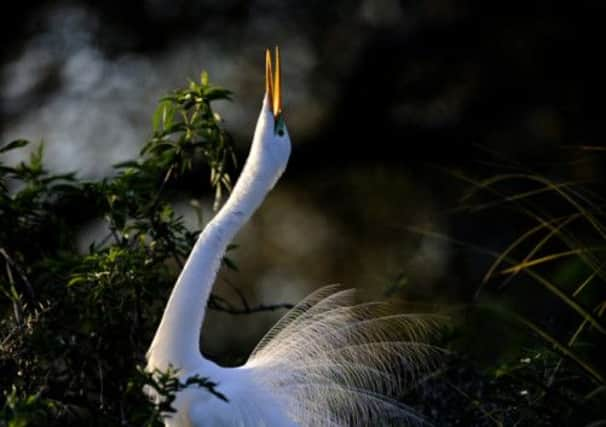Book review: Birds & People by Mark Cocker


Birds & People
by Mark Cocker
Jonathan Cape, £40
As Mark Cocker makes clear in his introduction, it is as much about people as it is about birds – the many hundreds of ways humans have used and abused birds down the millennia.
David Tipling’s photographs, garnered from more than 39 countries across seven continents are irresistible. They are a feast of colour, history, display and insight. Cocker’s text reflects his lifelong passion for birds and for ornithological and historical detail. But none of that makes this a bird book, despite the RSPB sneaking its logo on to the front cover.
Advertisement
Hide AdTo begin with I wasn’t sure how to tackle it. Its weight (well over 8lbs with 530 pages of tight, small text) does not make it a comfortable book to sit and read, and yet neither is it what we have come to think of as a coffee table book. No, the clue to accessing this treasure-trove is the way Cocker has chosen to lay it out. It is arranged by family in order of ornithological precedence, according to the received wisdom of Gill and Wright’s systematic list, and it plods methodically through the whole 200 bird families, picking out the particular species of each family with which people have interacted, for good, bad or simply horrific.
Once I had fathomed this, and with the helpful aid of a very comprehensive species index, I found it gripping. Think of a bird – a swallow, say – check it out in the index and there is the whole family, Hirundinidae, over eight pages of fact-packed interface between humans and the 86 species of swallows and martins worldwide. Try another I know has a messy history – the ill-fated passenger pigeon – and there the whole sorry tale is, no hideous detail spared. There were uncountable hosts of passenger pigeons as recently as the 1850s when John Muir wrote of them in Wisconsin that “…no other bird seemed to us so wonderful. [They] flew like the winds in flocks of millions from climate to climate… flocks streaming south… so large that they were flowing from horizon to horizon in an almost continuous stream all day long.” Well over a billion birds. John James Audubon described a roost that stretched for more than 42 miles. White American farmers and hunters saw them as a limitless resource, yet they still managed to drive them to extinction in a matter of 60 years: by 1914 it was all over.
Then one more, an old favourite of mine, the goshawk, appears within the long chapter on birds of prey (Cathartidae, Falconidae and Accipitridae) detailing the complex ancient and modern history of falcons and falconry across the globe. Its savage marigold eyes glare out at me from the fist of a falconer in David Tipling’s dramatic illustration. And that’s when this splendid book gets you.
You can’t possibly just read about the goshawk, because its particular essay draws you irresistibly back to previous falconry references, more exquisite photographs and the whole unfolding history of falconry involving many different eagles, falcons and hawks from the second millennium BC in the Middle East, through Europe in the Middle Ages to present day Mongolia. The goshawk section led me on to a wretched picture of a live sparrowhawk for sale in the Beijing bird market, tied upside down by the feet, dangling with its wings intentionally broken, on sale as a food delicacy.
Cocker doesn’t pull any punches; he dwells weightily upon man’s cruelty to and abuse of birds, the exploitation and harvesting of their feathers and their skins, their meat, their eggs, even their nests collected for birds’ nest soup, one of the most expensive foods in the world, retailing at up to £1,180 a kilogram.
Yes, this is a bird book, and clearly written by one of the UK’s leading bird/nature writers who unquestionably knows his stuff, but it is one that creates its own genre, presenting a whole new dimension to the literature of birds and bird history – the exquisite to the simply ghastly – at the greedy, exploitative, religious, symbolic and utterly merciless hands of mankind throughout the ages.
Advertisement
Hide AdThis treasure possesses the timelessness and the authority of a genuine magnum opus. It is encyclopaedic in its reach, covering birds in art, literature, dress, heraldry, industry, commerce, cooking, hunting, farming, philosophy, folklore and delight. It stretches way beyond natural history, but that is in there too. A book for all birds and all people.
• Mark Cocker and David Tipling are at the Edinburgh International Book Festival on 20 August